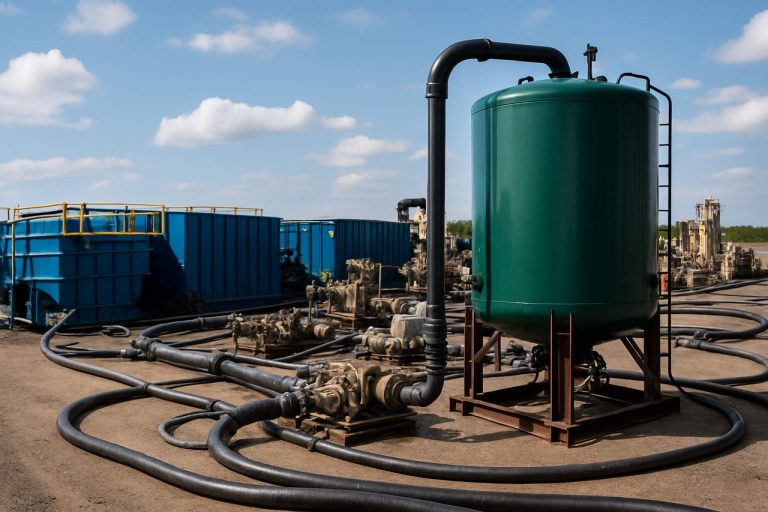
Therapeutic Peptide Engineering Market Report 2025: In-Depth Analysis of Innovation, Growth Drivers, and Global Opportunities. Explore Key Trends, Competitive Dynamics, and Future Projections Shaping the Industry.
- Executive Summary & Market Overview
- Key Technology Trends in Therapeutic Peptide Engineering
- Competitive Landscape and Leading Players
- Market Growth Forecasts (2025–2030): CAGR, Revenue, and Volume Analysis
- Regional Market Analysis: North America, Europe, Asia-Pacific, and Rest of World
- Challenges and Opportunities in Therapeutic Peptide Engineering
- Future Outlook: Emerging Applications and Investment Hotspots
- Sources & References
Executive Summary & Market Overview
Therapeutic peptide engineering refers to the design, modification, and optimization of peptide molecules for use as pharmaceutical agents. Peptides, which are short chains of amino acids, have emerged as a promising class of therapeutics due to their high specificity, potency, and favorable safety profiles. The global market for therapeutic peptides is experiencing robust growth, driven by advances in peptide synthesis technologies, increasing prevalence of chronic diseases, and a growing pipeline of peptide-based drugs.
As of 2025, the therapeutic peptide market is valued at approximately USD 45 billion, with projections indicating a compound annual growth rate (CAGR) of 7-9% through 2030. This expansion is fueled by the rising demand for targeted therapies in oncology, metabolic disorders, and infectious diseases, as well as the increasing adoption of peptides in personalized medicine approaches. Notably, the approval of novel peptide drugs and the expansion of indications for existing therapies have contributed to market momentum. For example, recent approvals by the U.S. Food and Drug Administration (FDA) and the European Medicines Agency (EMA) have underscored the clinical and commercial viability of engineered peptides.
Key industry players, including Novo Nordisk, Amgen, and Ipsen, are investing heavily in R&D to develop next-generation peptide therapeutics with improved stability, bioavailability, and targeted delivery. Technological advancements such as solid-phase peptide synthesis, peptide cyclization, and conjugation with drug delivery systems are enabling the creation of more effective and durable peptide drugs. Additionally, the integration of artificial intelligence and machine learning in peptide design is accelerating the discovery and optimization process, reducing time-to-market for new candidates.
- North America remains the largest market, accounting for over 40% of global revenue, followed by Europe and Asia-Pacific, where rapid healthcare infrastructure development is spurring demand.
- Strategic collaborations between biotech firms and academic institutions are fostering innovation and expanding the therapeutic peptide pipeline.
- Regulatory agencies are streamlining approval pathways for peptide drugs, recognizing their potential to address unmet medical needs.
In summary, therapeutic peptide engineering is positioned at the forefront of biopharmaceutical innovation in 2025, with strong market fundamentals, technological progress, and a dynamic competitive landscape shaping its future trajectory.
Key Technology Trends in Therapeutic Peptide Engineering
Therapeutic peptide engineering in 2025 is characterized by rapid advancements in design, synthesis, and delivery technologies, driven by the need for more effective, stable, and targeted peptide-based drugs. The sector is leveraging cutting-edge computational tools, novel chemical modifications, and innovative delivery systems to overcome traditional limitations such as poor bioavailability, rapid degradation, and limited tissue penetration.
One of the most significant trends is the integration of artificial intelligence (AI) and machine learning (ML) in peptide drug discovery and optimization. AI-driven platforms are accelerating the identification of bioactive peptide sequences, predicting their stability, and modeling their interactions with biological targets. Companies like Amgen and Novartis are investing in these technologies to streamline the early stages of peptide drug development, reducing time-to-market and R&D costs.
Another key trend is the adoption of non-natural amino acids and backbone modifications to enhance peptide stability and pharmacokinetics. Techniques such as cyclization, PEGylation, and stapling are being widely used to protect peptides from enzymatic degradation and prolong their half-life in vivo. For instance, Bachem and Lonza are at the forefront of providing custom synthesis services for modified peptides, supporting the growing demand for next-generation therapeutics.
Advancements in peptide conjugation and targeted delivery are also shaping the landscape. The development of peptide-drug conjugates (PDCs) and peptide-based nanoparticles enables precise delivery to specific tissues or cells, minimizing off-target effects and improving therapeutic outcomes. Ipsen and AbbVie are actively exploring these approaches in oncology and metabolic diseases.
- AI-driven design: Accelerates sequence optimization and target prediction.
- Backbone modifications: Improves stability and bioavailability.
- Advanced delivery systems: Enhances tissue targeting and reduces side effects.
- Automated synthesis platforms: Increases throughput and reproducibility, as seen with Thermo Fisher Scientific’s peptide synthesizers.
According to Grand View Research, the global therapeutic peptides market is expected to reach $62.1 billion by 2027, underpinned by these technological innovations. As the field continues to evolve, the convergence of computational biology, synthetic chemistry, and advanced delivery will remain central to the next wave of peptide therapeutics.
Competitive Landscape and Leading Players
The competitive landscape of the therapeutic peptide engineering market in 2025 is characterized by a dynamic mix of established pharmaceutical giants, specialized biotechnology firms, and emerging startups. The sector is witnessing robust growth, driven by advances in peptide synthesis technologies, increasing demand for targeted therapies, and a favorable regulatory environment for biologics.
Leading players in this space include Amgen Inc., Novo Nordisk A/S, and Pfizer Inc., all of which have made significant investments in peptide-based drug development. Amgen continues to expand its peptide portfolio, leveraging proprietary engineering platforms to enhance peptide stability and bioavailability. Novo Nordisk remains a global leader in metabolic and endocrine peptide therapeutics, particularly in diabetes and obesity management, with its GLP-1 analogs setting industry benchmarks.
Biotechnology innovators such as Polyphor Ltd., Bicycle Therapeutics plc, and PeptiDream Inc. are gaining traction through proprietary platforms that enable the discovery and optimization of novel peptide modalities. Bicycle Therapeutics is notable for its bicyclic peptide technology, which offers high specificity and affinity for challenging targets, while PeptiDream utilizes its Peptide Discovery Platform System (PDPS) to generate macrocyclic peptides with improved pharmacological properties.
Strategic collaborations and licensing agreements are a hallmark of the competitive environment. For example, Amgen and PeptiDream have entered into partnerships to co-develop peptide therapeutics, combining Amgen’s clinical expertise with PeptiDream’s discovery capabilities. Similarly, Novo Nordisk has formed alliances with academic institutions and smaller biotech firms to accelerate innovation in peptide engineering.
Market entry barriers remain high due to the complexity of peptide synthesis, stringent regulatory requirements, and the need for advanced delivery systems. However, the increasing availability of contract development and manufacturing organizations (CDMOs) specializing in peptides, such as Bachem Holding AG, is enabling smaller players to compete more effectively.
Overall, the therapeutic peptide engineering market in 2025 is marked by intense competition, rapid technological innovation, and a growing pipeline of peptide-based therapeutics targeting a broad spectrum of diseases.
Market Growth Forecasts (2025–2030): CAGR, Revenue, and Volume Analysis
The therapeutic peptide engineering market is poised for robust growth between 2025 and 2030, driven by advances in peptide synthesis technologies, expanding clinical applications, and increasing investments from both pharmaceutical giants and biotech startups. According to projections by Grand View Research, the global peptide therapeutics market is expected to register a compound annual growth rate (CAGR) of approximately 7.5% during this period, with engineered peptides representing a significant and expanding segment within this market.
Revenue forecasts indicate that the market for therapeutic peptide engineering will surpass $60 billion by 2030, up from an estimated $38 billion in 2025. This growth is underpinned by the increasing approval rate of peptide-based drugs, particularly in oncology, metabolic disorders, and infectious diseases. The volume of engineered peptide products is also expected to rise, with the number of new peptide drug candidates entering clinical trials projected to grow at a CAGR of 8–10% through 2030, as reported by Fortune Business Insights.
Regionally, North America will continue to dominate the market, accounting for over 40% of global revenue by 2030, fueled by strong R&D infrastructure and favorable regulatory pathways. However, the Asia-Pacific region is anticipated to exhibit the fastest CAGR, exceeding 9% during the forecast period, as countries like China, Japan, and South Korea ramp up investments in peptide drug development and manufacturing capabilities (MarketsandMarkets).
Key growth drivers include:
- Technological advancements in solid-phase peptide synthesis and recombinant DNA technology, enabling the design of more stable and bioavailable peptides.
- Rising prevalence of chronic diseases, which is expanding the addressable patient population for peptide-based therapies.
- Strategic collaborations and licensing agreements between biotech firms and large pharmaceutical companies, accelerating the commercialization of novel engineered peptides.
In summary, the therapeutic peptide engineering market is set for sustained expansion from 2025 to 2030, with strong revenue and volume growth supported by innovation, clinical demand, and global investment trends.
Regional Market Analysis: North America, Europe, Asia-Pacific, and Rest of World
The global therapeutic peptide engineering market is experiencing robust growth, with significant regional variations in innovation, adoption, and commercialization. In 2025, North America, Europe, Asia-Pacific, and the Rest of the World (RoW) each present distinct dynamics shaped by regulatory environments, R&D investments, and healthcare infrastructure.
- North America: North America, led by the United States, remains the largest and most mature market for therapeutic peptide engineering. The region benefits from a strong biotechnology ecosystem, substantial funding, and a favorable regulatory framework. The U.S. Food and Drug Administration (FDA) has approved over 70 peptide drugs, reflecting a supportive environment for clinical translation and commercialization. Major players such as Amgen, Pfizer, and Eli Lilly and Company drive innovation through strategic partnerships and acquisitions. According to Grand View Research, North America accounted for over 40% of the global market share in 2024, a trend expected to continue in 2025.
- Europe: Europe is characterized by strong academic-industry collaborations and supportive public funding, particularly in countries like Germany, Switzerland, and the UK. The European Medicines Agency (EMA) has streamlined regulatory pathways for peptide therapeutics, encouraging clinical development. Companies such as Novo Nordisk and Sanofi are at the forefront, leveraging advanced peptide engineering for metabolic and rare diseases. The region is also witnessing increased activity in biosimilars and generics, further expanding market opportunities.
- Asia-Pacific: The Asia-Pacific region is emerging as a high-growth market, driven by expanding healthcare access, rising chronic disease prevalence, and government initiatives to foster biopharmaceutical innovation. Countries like China, Japan, and South Korea are investing heavily in R&D and manufacturing capabilities. Local firms, including Hansoh Pharma and Peptisyntha, are increasingly active in both domestic and global markets. According to Fortune Business Insights, Asia-Pacific is projected to register the fastest CAGR through 2025.
- Rest of World (RoW): The RoW segment, encompassing Latin America, the Middle East, and Africa, is at a nascent stage but shows potential due to improving healthcare infrastructure and growing pharmaceutical investments. Market penetration remains limited, but multinational companies are expanding their presence through partnerships and technology transfer agreements.
Overall, regional disparities in regulatory support, R&D intensity, and market access will continue to shape the global landscape of therapeutic peptide engineering in 2025, with North America and Asia-Pacific leading in innovation and growth.
Challenges and Opportunities in Therapeutic Peptide Engineering
Therapeutic peptide engineering is a rapidly evolving field, offering significant promise for the development of novel treatments across oncology, metabolic disorders, infectious diseases, and more. However, the sector faces a unique set of challenges and opportunities as it moves into 2025.
Challenges:
- Stability and Delivery: Peptides are inherently susceptible to enzymatic degradation and rapid clearance from the body, which limits their bioavailability and therapeutic efficacy. Overcoming these barriers requires advanced formulation strategies, such as cyclization, PEGylation, or encapsulation in nanoparticles, all of which add complexity and cost to development (U.S. Food and Drug Administration).
- Manufacturing and Scalability: The synthesis of therapeutic peptides, especially those with complex structures or non-natural amino acids, can be technically challenging and expensive. Ensuring batch-to-batch consistency and scalability for commercial production remains a significant hurdle (Grand View Research).
- Immunogenicity: While peptides are generally less immunogenic than larger biologics, modifications to improve stability or activity can inadvertently trigger immune responses, complicating clinical development and regulatory approval (European Medicines Agency).
- Regulatory Complexity: The regulatory landscape for peptide therapeutics is still maturing, with evolving guidelines on quality, safety, and efficacy. Navigating these requirements can delay time-to-market and increase development costs (U.S. Food and Drug Administration).
Opportunities:
- Technological Advancements: Innovations in solid-phase peptide synthesis, computational design, and high-throughput screening are accelerating the discovery and optimization of therapeutic peptides. AI-driven platforms are enabling the rapid identification of candidates with improved pharmacokinetic and pharmacodynamic profiles (Bain & Company).
- Expanding Indications: Peptide drugs are increasingly being explored for previously untreatable conditions, including rare diseases and personalized medicine applications. This expansion is supported by a growing body of clinical evidence and regulatory incentives for orphan drugs (Evaluate Ltd.).
- Strategic Collaborations: Partnerships between biotech firms, pharmaceutical companies, and academic institutions are fostering innovation and sharing of expertise, reducing risk and accelerating development timelines (Pharmaceutical Research and Manufacturers of America).
In summary, while therapeutic peptide engineering faces notable scientific and regulatory challenges, the convergence of technological innovation and strategic collaboration is unlocking new opportunities for growth and impact in 2025 and beyond.
Future Outlook: Emerging Applications and Investment Hotspots
Therapeutic peptide engineering is poised for significant growth and innovation in 2025, driven by advances in synthetic biology, delivery technologies, and computational design. The future outlook for this sector is shaped by emerging applications across oncology, metabolic disorders, infectious diseases, and rare genetic conditions, as well as by evolving investment patterns that highlight new hotspots for development and commercialization.
One of the most promising application areas is oncology, where engineered peptides are being developed as targeted therapeutics and as components of novel immunotherapies. Peptide-drug conjugates and peptide-based vaccines are gaining traction, with several candidates advancing through clinical pipelines. For example, companies are leveraging peptide engineering to improve tumor specificity and reduce off-target effects, a trend expected to accelerate as more data emerges from ongoing trials (Fierce Biotech).
Metabolic diseases, particularly diabetes and obesity, remain a major focus for peptide therapeutics. Next-generation GLP-1 analogs and dual agonists are being engineered for enhanced efficacy and longer half-lives, addressing unmet needs in patient compliance and therapeutic outcomes. The success of recent peptide-based drugs in this space has spurred increased R&D investment and strategic partnerships (Evaluate).
Infectious diseases represent another emerging frontier, with engineered antimicrobial peptides (AMPs) being explored as alternatives to traditional antibiotics. The rise of antimicrobial resistance is catalyzing both public and private investment in this area, with several biotech startups and academic spinouts receiving funding to advance AMP candidates into clinical development (GlobalData).
From an investment perspective, North America and Europe continue to dominate, but Asia-Pacific is rapidly emerging as a hotspot, particularly in China and South Korea, where government incentives and a growing biotech ecosystem are accelerating innovation. Venture capital funding in peptide engineering startups reached record highs in 2024, with investors targeting platforms that integrate AI-driven design and high-throughput screening (CB Insights).
Looking ahead to 2025, the convergence of advanced engineering techniques, expanding therapeutic indications, and robust investment activity is expected to drive the therapeutic peptide market toward new frontiers, with a strong emphasis on precision medicine and personalized therapies.
Sources & References
- European Medicines Agency (EMA)
- Novo Nordisk
- Ipsen
- Novartis
- Bachem
- Thermo Fisher Scientific
- Grand View Research
- Polyphor Ltd.
- Bicycle Therapeutics plc
- PeptiDream Inc.
- Fortune Business Insights
- MarketsandMarkets
- Eli Lilly and Company
- Hansoh Pharma
- Bain & Company
- Pharmaceutical Research and Manufacturers of America
- GlobalData



